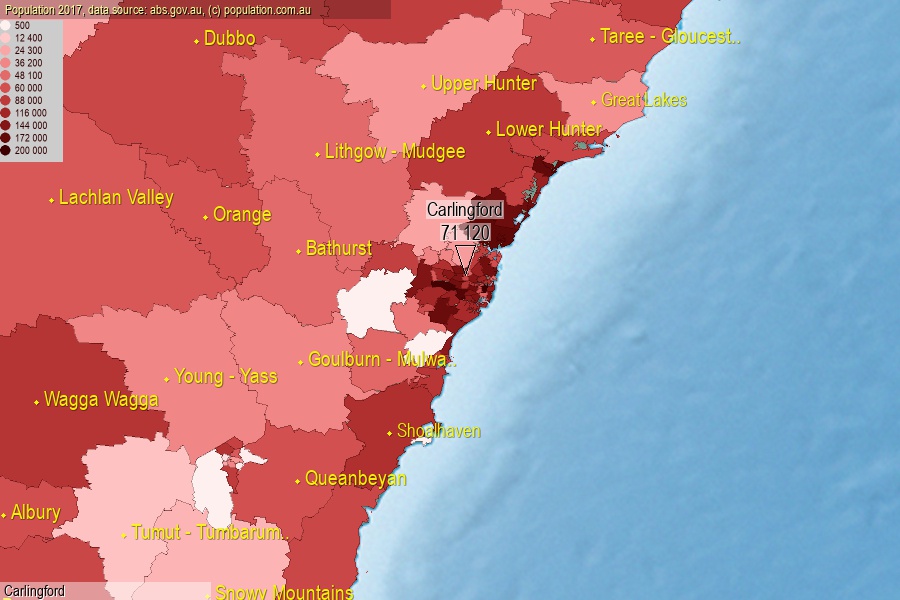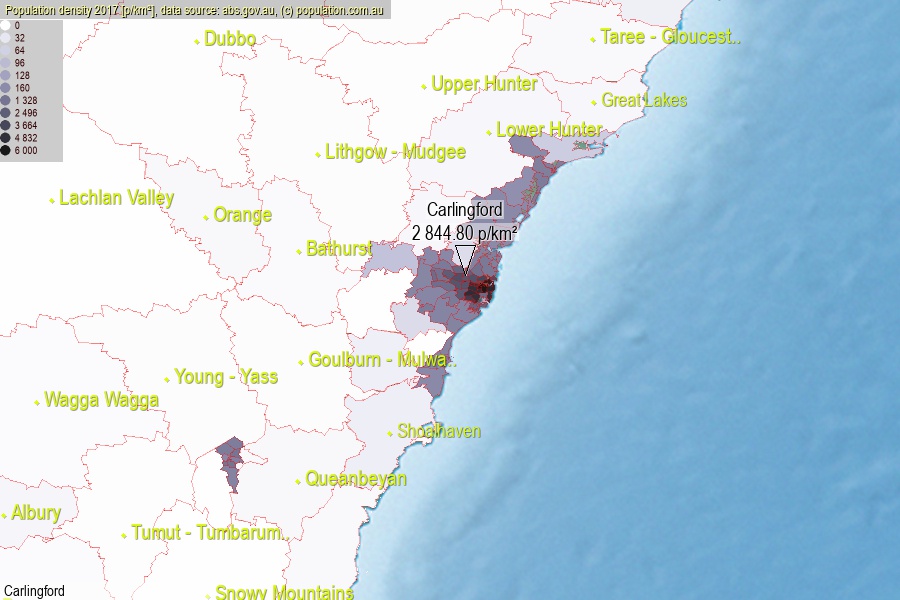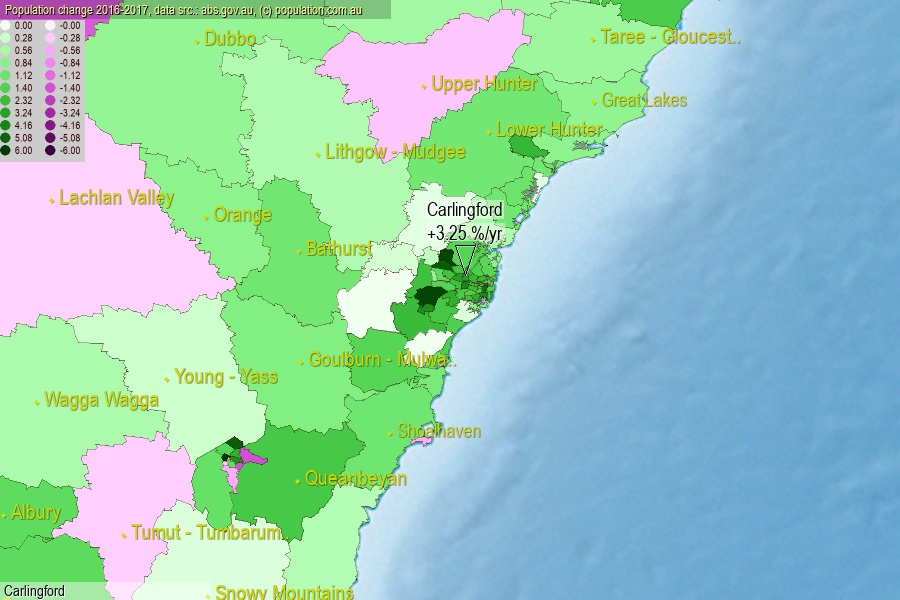 population.com.au
population.com.auLast official estimated population of Carlingford (as Statistical Area Level 3) was 71 120 people (on 2017-06-30)[2]. This was 0.29% of total Australian population and 0.894% of NSW population. Area of Carlingford is 25.00 km², in this year population density was 2 844.80 p/km² . If population growth rate would be same as in period 2016-2017 (+3.25%/yr), Carlingford population in 2025 would be 91 829. [0]



Click to enlarge. Carlingford is located in the center of the images.
Population [people], population density [p./km²] and population change [%/year] [2]
View borders » (new window) [4]
[1991-1992] -0.03 %/Y
[1992-1993] -0.08 %/Y
[1993-1994] +0.43 %/Y
[1994-1995] -0.48 %/Y
[1995-1996] +0.23 %/Y
[1996-1997] +0.49 %/Y
[1997-1998] +0.49 %/Y
[1998-1999] +0.72 %/Y
[1999-2000] +0.79 %/Y
[2000-2001] +1.17 %/Y
[2001-2002] -0.58 %/Y
[2002-2003] -0.25 %/Y
[2003-2004] +0.37 %/Y
[2004-2005] +0.56 %/Y
[2005-2006] +0.02 %/Y
[2006-2007] +1.56 %/Y
[2007-2008] +1.67 %/Y
[2008-2009] +1.95 %/Y
[2009-2010] +1.50 %/Y
[2010-2011] +1.54 %/Y
[2011-2012] +1.77 %/Y
[2012-2013] +1.87 %/Y
[2013-2014] +1.98 %/Y
[2014-2015] +2.38 %/Y
[2015-2016] +2.37 %/Y
[2016-2017] +3.25 %/Y
[0] Calculated with linear interpolation from officially estimated population
[1] Read more about SA3 and Australian Statistical Geography Standard (ASGS) on abs.gov.au
[2] Population data from Australian Bureau of Statistics (Population and density: 2017; change: 2016-2017)
[3] Digital Boundaries: Australian Statistical Geography Standard (ASGS) 2016.
[4] Border coordinates are simplifyed using Ramer-Douglas-Peucker algorithm.